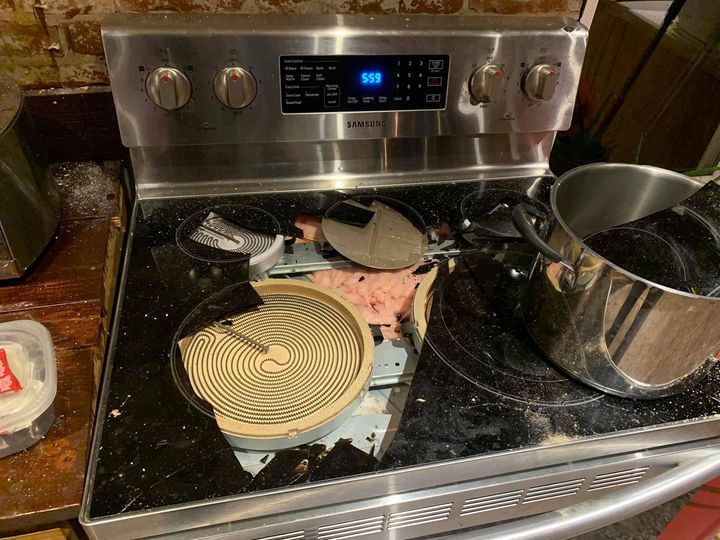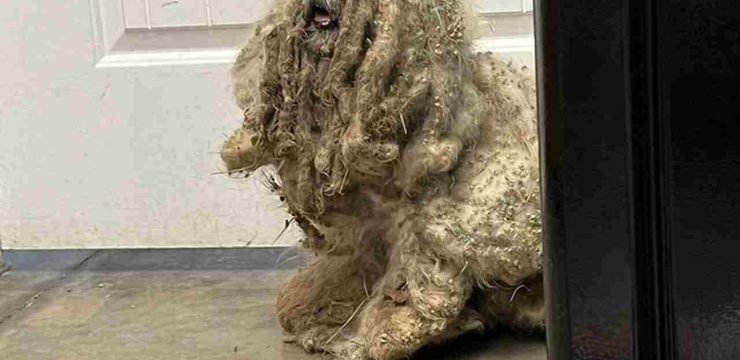Glass top stoves have become a staple in modern kitchens, loved for their sleek, elegant design and minimalist appeal. These stoves not only look beautiful but also offer the practical benefit of being easy to clean. Unlike traditional coil or gas stoves, their smooth, flat surface eliminates the frustration of cleaning crumbs and spills from hard-to-reach areas. However, as polished and durable as they may appear, glass top stoves come with their own set of unique risks. Many homeowners are unaware of one seemingly innocent mistake that can turn their kitchen centerpiece into a shattered, costly hazard. Understanding this risk—and how to prevent it—can save you from a major kitchen disaster.

The specific mistake that homeowners often make involves placing a hot lid face-down on the glass top stove. At first glance, this seems harmless. After all, the cooktop is designed to handle extreme heat, so why would a lid cause any damage? The answer lies in the science behind heat, pressure, and vacuum seals. When a hot lid is placed directly on the stove’s surface, the residual heat becomes trapped between the lid and the glass. As the temperature difference grows, it can create a vacuum seal, causing the lid to stick tightly to the glass.
This vacuum seal is far more dangerous than it sounds. As the cooktop begins to cool, the trapped heat and air under the lid can cause a sudden buildup of pressure. This pressure difference can lead to a spiderweb-like crack across the glass surface. While tempered glass is designed to handle heat, the stress caused by uneven pressure and trapped heat can weaken its structure, causing it to crack or shatter.
A cracked glass top stove is not merely an unsightly blemish—it’s a serious safety hazard that should not be ignored. For one, a cracked surface can fully shatter under additional heat or pressure, sending sharp glass shards flying. These shards pose a significant risk of cuts, burns, or other injuries, particularly for anyone nearby. Moreover, cracks in the glass interfere with the stove’s heating elements, resulting in uneven cooking. Worse, they can expose the electrical components beneath the surface, increasing the risk of short circuits and potential fires. This combination of hazards makes it critical to take immediate action if you notice any damage.
Fortunately, with a bit of care and awareness, you can protect your glass top stove and avoid costly repairs or replacements. The simplest solution is to never place a hot lid face-down on the cooktop. Instead, set the lid on a heat-resistant trivet or a cool, flat surface, like a countertop or cutting board. This small, mindful habit can prevent the vacuum seal from forming and eliminate the risk of shattering your stove.
In addition to avoiding the hot lid trap, there are other steps you can take to keep your glass top stove in perfect condition. Choosing the right cookware is essential. Use pots and pans with flat, smooth bottoms to ensure even heat distribution and to minimize the risk of scratching the surface. Avoid sliding heavy cookware—like cast iron—across the glass, as even minor scratches can weaken the surface over time. If you do use heavy pans, lift them carefully instead of dragging them.
Regular cleaning is also key to maintaining your stove. Even tiny food particles or residue left on the glass can become abrasive under cookware, leading to scratches. After each use, wipe down the surface with a soft cloth or sponge and a non-abrasive cleaner specifically designed for glass cooktops. Avoid using harsh scrubbers, like steel wool, which can damage the surface and make it more susceptible to cracks. Keeping the stove clean not only preserves its appearance but also protects its structural integrity.
If, despite your best efforts, you notice a crack on your glass top stove, it’s important to stop using it immediately. Continuing to cook on a cracked surface will only worsen the damage and increase the risk of a complete shatter. Once you’ve identified the issue, assess the severity of the crack. Small, superficial cracks might be repairable, but deeper or more extensive damage typically requires replacing the entire cooktop. Contact a professional technician to evaluate the situation and recommend the safest course of action. While repairs may seem tempting for smaller cracks, a full replacement is often the more reliable and long-lasting solution.
In conclusion, while glass top stoves are a stylish and functional addition to any kitchen, they require careful handling to remain safe and intact. The risk of placing a hot lid on the cooktop is a common but avoidable mistake that homeowners need to be aware of. By understanding how a vacuum seal forms and the dangers of trapped heat, you can take simple steps to prevent a costly accident. Placing hot lids on trivets, using compatible cookware, and cleaning the stove regularly will go a long way in keeping your appliance in pristine condition.
If you do experience damage, don’t ignore it. A cracked glass top stove poses serious safety risks that should not be overlooked. Acting quickly and consulting a professional can help you determine whether repair or replacement is the best solution.
By being mindful of these risks and taking preventive measures, you can enjoy the beauty, convenience, and efficiency of your glass top stove for years to come. So the next time you’re cooking, keep these tips in mind to protect your kitchen’s centerpiece and ensure it remains both safe and functional.





